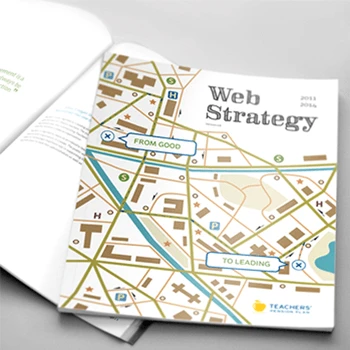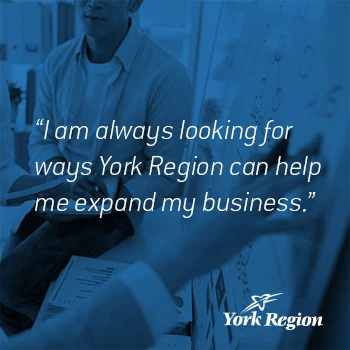What exactly is service experience strategy and why do organizations need it?
Service experience strategy orchestrates every interaction people have with your organization to create connected, intentional experiences. As Tedde van Gelderen explains in Experience Thinking, customers don't experience silos - they experience your complete service ecosystem. Without strategy, you end up with disconnected touchpoints that confuse people and waste resources. Strategy ensures your website, phone support, email communications, and in-person interactions work together as one coherent experience.
Tip: Audit how your current service touchpoints connect to each other rather than evaluating them individually to identify the biggest strategy gaps.
How does service experience strategy differ from customer service improvement?
Customer service improvement typically focuses on fixing problems after they occur, while service experience strategy designs the complete journey to prevent problems and create value at every stage. Using the Experience Thinking framework, we examine how brand promise, content flow, product functionality, and service delivery work together across the entire lifecycle - from awareness through advocacy. This holistic approach connects all four experience quadrants rather than optimizing individual service interactions.
Tip: Map your current service improvements against the complete customer lifecycle to see where you're solving symptoms versus addressing root experience design issues.
What business problems does service experience strategy solve?
Service experience strategy addresses fundamental business challenges: customer acquisition costs rising because experiences don't convert browsers to buyers, retention declining because post-purchase experiences disappoint, support costs increasing because services are confusing to use, and competitive advantage eroding because experiences feel generic. The Experience Thinking approach reveals how disconnected brand, content, product, and service experiences create these problems and provides frameworks to solve them systematically.
Tip: Calculate the cost of poor service experiences across acquisition, retention, and support before investing in strategy work to understand the true business case.
How do we know if our organization is ready for service experience strategy work?
Organizations ready for service experience strategy typically face challenges that span multiple departments - marketing promises don't match service delivery, customer feedback reveals confusing journeys, or growth initiatives fail because experiences can't support them. You're ready when leadership recognizes that isolated improvements haven't solved systemic experience problems. The key indicator is willingness to examine how business model, processes, people, and technology create connected experiences rather than just fixing individual touchpoints.
Tip: Assess your organization's readiness by evaluating whether stakeholders can collaborate across functions to implement experience changes, not just agree they're needed.
What role does foresight design play in service experience strategy?
Foresight design helps organizations anticipate future user needs and market changes when developing service experiences. Rather than designing only for current requirements, foresight design methods explore potential future scenarios, emerging technologies, and evolving user behaviors to create adaptable service strategies. This approach ensures your service experience remains relevant as markets shift and helps identify opportunities before competitors recognize them.
Tip: Include scenario planning in your service strategy development to test how your proposed experience would perform under different future conditions.
How long does it typically take to develop and implement a service experience strategy?
Service experience strategy development usually takes 8-16 weeks, depending on organizational complexity and scope. Implementation extends 6-18 months as you redesign touchpoints, align processes, and build capabilities. The Experience Thinking framework accelerates this by providing clear structure for examining brand, content, product, and service experiences systematically. We use Design Tracks methodology - combining Steps, Sprints, Runs, and Relays - to match timeline and depth to your specific needs and constraints.
Tip: Plan for strategy development and implementation as separate phases with different resource requirements rather than trying to optimize both simultaneously.
What's the difference between service design and service experience strategy?
Service design focuses on designing specific service interactions and processes, while service experience strategy provides the overarching framework that guides all service design decisions. Strategy defines the experience vision, identifies journey priorities, and establishes principles for service delivery. Service design then creates the specific blueprints, touchpoint designs, and operational procedures to deliver that strategy. The Experience Thinking framework ensures strategy connects service experiences to brand, content, and product experiences for maximum impact.
Tip: Develop strategy before detailed service design work to ensure your design efforts align with business goals and user journey priorities.
How does the Experience Thinking framework apply to service experience strategy?
Experience Thinking provides structure for service strategy by examining four connected experience areas: how people experience your brand (promise and personality), your content (information and functionality), your product (usability and features), and your service (support and interactions). Each quadrant influences the others, so service strategy must consider all four to create coherent experiences. This framework prevents the common mistake of optimizing service delivery without ensuring it aligns with brand promise or supports product usage effectively.
Tip: Use all four Experience Thinking quadrants to evaluate your current service strategy rather than focusing only on service delivery improvements.
What makes Experience Thinking different from Design Thinking for service strategy?
While Design Thinking focuses on specific problem-solving through empathy, ideation, and testing, Experience Thinking provides a framework for understanding how brand, content, product, and service experiences connect across the complete customer lifecycle. For service strategy, this means considering how service interactions influence brand perception, how content affects service efficiency, and how product design impacts support needs. Experience Thinking addresses the organizational complexity that Design Thinking often overlooks.
Tip: Apply Experience Thinking when your service challenges span multiple organizational functions rather than focusing on isolated service improvement projects.
How do you map the complete experience lifecycle for service strategy?
Experience lifecycle mapping follows users through three key roles: customers (who buy), users (who interact), and clients (who become loyal advocates). For each lifecycle phase, we examine how brand, content, product, and service experiences work together using the Experience Thinking framework. This reveals where service experiences support or undermine other experience areas and identifies the critical moments where great service creates lasting loyalty. The red thread connects all touchpoints into one intentional journey.
Tip: Map your service experiences specifically against the customer-user-client progression to identify where service quality most impacts long-term relationship building.
How does Experience Thinking address the connection between service delivery and brand experience?
Experience Thinking recognizes that service delivery directly shapes brand perception - people judge your brand based on service interactions, not just marketing messages. Every service touchpoint either reinforces or contradicts your brand promise. The framework helps identify where service delivery aligns with intended brand personality and where gaps exist. Service strategy must ensure that tone, response times, problem-solving approaches, and staff behavior all express your brand authentically across every interaction.
Tip: Audit your service touchpoints for brand personality consistency rather than just functional effectiveness to strengthen brand perception through service delivery.
What role does content experience play in service strategy?
Content experience within service strategy encompasses how information flows through service interactions - from self-service content that reduces support needs to staff scripts that ensure consistent messaging. The Experience Thinking framework shows how content architecture, tone, and accessibility directly impact service efficiency and user satisfaction. Poor content experience forces people into unnecessary service interactions, while great content experience enables smooth self-service and informed conversations with support staff.
Tip: Analyze how content gaps drive unnecessary service interactions to identify content improvements that can reduce service costs while improving user experience.
How do product and service experiences integrate in Experience Thinking?
Product and service experiences are inseparable in the Experience Thinking framework - product design decisions directly impact service needs, while service interactions reveal product improvement opportunities. Service strategy must consider how product complexity affects support requirements, how product onboarding reduces service burden, and how service insights inform product development. The goal is creating products so intuitive they minimize service needs while providing service experiences that maximize product value.
Tip: Track which product features generate the most service interactions to identify product design improvements that could reduce service costs while improving user experience.
How does Experience Thinking ensure service experiences remain connected rather than fragmented?
Experience Thinking maintains connection by treating service as part of an integrated experience ecosystem rather than isolated interactions. The framework requires examining how each service touchpoint affects brand perception, content effectiveness, and product usage. Service strategy establishes experience principles that apply across all touchpoints, creates governance frameworks that maintain consistency, and develops measurement systems that track experience coherence, not just individual service metrics.
Tip: Establish experience principles that guide all service decisions rather than optimizing individual touchpoints independently to maintain experience coherence.
What research methods do you use to understand current service experiences?
We combine behavioral observation, stakeholder interviews, journey mapping, and service blueprinting to understand how people actually experience your services versus how you think they do. Experience Thinking research examines not just service interactions but how they connect to brand perceptions, content usage, and product adoption. We observe people in their environment using ethnographic methods because they often can't accurately describe their own service behaviors when asked directly.
Tip: Include observational research alongside surveys and interviews because people often can't accurately describe their actual service usage patterns and pain points.
How do you research service experiences across multiple channels and touchpoints?
Multi-touchpoint research requires mapping the complete service ecosystem using both digital analytics and qualitative methods. We track user journeys across channels, conduct longitudinal studies to understand experience over time, and use ecosystem diagrams to visualize all service connections. The Experience Thinking framework ensures we examine how brand, content, product, and service touchpoints work together rather than optimizing individual channels in isolation.
Tip: Map actual user journeys across all channels rather than analyzing individual touchpoints to understand how channel switching affects overall service experience quality.
What role does competitive analysis play in service experience strategy research?
Competitive analysis for service experience examines how other organizations orchestrate complete service journeys, not just individual service features. We analyze competitive brand promises and service delivery alignment, content strategy effectiveness, and service integration with products. This reveals market opportunities where better experience design could create competitive advantage. We focus on understanding service experience strategies rather than just cataloging service features.
Tip: Analyze competitors' complete service experience strategies and brand alignment rather than just comparing individual service features or response times.
How do you validate service experience strategy concepts before implementation?
Strategy validation uses prototyping approaches that test experience concepts, not just interface designs. We create service experience simulations, pilot test new touchpoint designs, and validate strategy assumptions through stakeholder workshops. The Experience Thinking framework helps us test how service changes affect brand perception, content effectiveness, and product adoption. Validation ensures strategy works across the complete experience ecosystem before large-scale implementation.
Tip: Test service experience strategy concepts through simulation and piloting rather than just stakeholder approval to validate assumptions before full implementation.
What research is needed to understand employee service experience needs?
Employee service experience research examines how staff deliver service experiences and what enables or prevents excellent service delivery. We analyze employee journeys, interview service staff about tools and processes, and observe actual service interactions. This reveals gaps between intended service strategy and actual delivery capability. Research also identifies training needs, process improvements, and tool requirements that enable consistent service experience delivery.
Tip: Research employee service delivery experiences as thoroughly as customer service experiences because staff capability directly determines service quality consistency.
How do you measure emotional aspects of service experiences during research?
Emotional measurement combines behavioral observation, journey mapping with emotional indicators, and post-interaction reflection sessions. We track emotional responses at specific journey moments, identify emotional triggers and satisfiers, and understand how emotions influence relationship building. The Experience Thinking framework helps connect emotional responses to specific brand, content, product, or service elements that drive those feelings.
Tip: Measure emotional responses at specific journey moments rather than overall satisfaction to identify which service elements most strongly influence relationship building.
How do you research service experience needs for different user types and lifecycle stages?
Lifecycle research examines how service needs evolve as people progress from customers to users to loyal clients, as described in Experience Thinking methodology. We conduct research with people at different relationship stages, analyze how service needs change over time, and identify critical service moments that influence lifecycle progression. This reveals where service strategy must adapt to support relationship development rather than treating all interactions identically.
Tip: Segment your service experience research by relationship lifecycle stage rather than just demographic characteristics to understand how service needs evolve over time.
How do you translate service experience strategy into actionable design changes?
Strategy translation uses service blueprints, touchpoint redesign, and process mapping to create specific implementation plans. We design new service interactions, create staff training programs, and develop content that supports service delivery. The Experience Thinking framework ensures all design changes align with brand experience, support content strategy, and integrate with product experience. Implementation includes governance frameworks that maintain strategy consistency over time.
Tip: Create detailed service blueprints that show how strategy translates to specific staff actions and system requirements rather than just high-level service concepts.
What does the service design process look like when using Experience Thinking?
Experience Thinking service design follows strategy, design, and management phases across brand, content, product, and service areas. We start with service strategy development, progress to detailed service blueprinting and touchpoint design, then create management frameworks for ongoing service delivery. Each phase examines how service design decisions affect other experience areas to maintain experience coherence throughout implementation.
Tip: Follow structured design phases that connect service design decisions to brand, content, and product implications rather than designing service interactions in isolation.
How do you design service experiences that work across different user contexts and environments?
Contextual service design examines how service needs change based on user environment, device, time constraints, and emotional state. We design adaptive service experiences that provide appropriate support regardless of context while maintaining experience consistency. This includes designing for mobile contexts, high-stress situations, and environments where attention is divided. Service strategy establishes principles that enable appropriate adaptation while maintaining brand and experience coherence.
Tip: Design service experiences that adapt to user context while maintaining consistent brand personality and core service principles across all situations.
What role do service design systems play in experience strategy implementation?
Service design systems encode service strategy into reusable patterns, guidelines, and tools that enable consistent service delivery at scale. These systems include service pattern libraries, staff behavior guidelines, content templates, and quality standards. Unlike traditional design systems focused on visual consistency, service design systems ensure experience consistency across all service touchpoints while enabling appropriate adaptation to specific contexts and needs.
Tip: Develop service design systems that encode experience principles and patterns rather than just visual guidelines to enable consistent service delivery across different contexts.
How do you design service experiences that reduce operational costs while improving quality?
Cost-effective service design uses Experience Thinking to identify where better content experience reduces service burden, where product improvements eliminate support needs, and where service design prevents problems rather than just solving them. We design self-service capabilities that feel like excellent service, create service efficiencies that improve rather than compromise experience quality, and identify service investments that create long-term operational savings through better experience design.
Tip: Focus service design improvements on preventing problems through better experience design rather than just making problem resolution more efficient.
How do you ensure service experience designs can be implemented by existing staff and systems?
Implementation feasibility analysis examines current staff capabilities, system constraints, and organizational readiness for service experience changes. We design implementation approaches that build on existing strengths while addressing capability gaps through training, process changes, or system improvements. Service design includes change management planning, staff development programs, and pilot testing approaches that ensure successful implementation within organizational constraints.
Tip: Assess current staff and system capabilities early in service design to ensure proposed service experiences can be successfully delivered with available resources.
What frameworks do you use for service experience innovation and continuous improvement?
Service innovation frameworks combine Experience Thinking principles with systematic experimentation, feedback collection, and iterative improvement processes. We establish innovation labs for testing new service concepts, create feedback loops that inform service refinement, and develop organizational capabilities for ongoing service experience evolution. Innovation focuses on advancing experience strategy rather than just implementing individual service improvements.
Tip: Establish systematic service innovation processes that test experience concepts regularly rather than waiting for major problems to trigger service redesign efforts.
How do you measure the success of service experience strategy beyond traditional customer satisfaction metrics?
Experience Thinking measurement examines relationship progression from customer to user to loyal client, not just satisfaction scores. We track experience coherence across brand, content, product, and service touchpoints, measure emotional engagement at critical journey moments, and analyze how service experiences influence long-term business outcomes. Success includes reduced acquisition costs, increased retention, improved advocacy, and enhanced competitive positioning through superior service experiences.
Tip: Develop measurement frameworks that track relationship progression and long-term business impact rather than just point-in-time satisfaction scores.
What metrics indicate whether service experiences are creating competitive advantage?
Competitive advantage metrics include service experience differentiation scores, customer preference drivers compared to competitors, service-influenced retention rates, and advocacy generation through service interactions. We measure how service experiences influence purchase decisions, whether service quality drives premium pricing acceptance, and how service experiences affect competitive switching behavior. These metrics reveal service strategy impact on market positioning.
Tip: Track how service experience quality influences competitive preference and pricing acceptance rather than just measuring service delivery efficiency.
How do you measure the business impact of integrated experience strategy across all four Experience Thinking quadrants?
Integrated measurement tracks how brand, content, product, and service experiences work together to drive business outcomes. We measure experience ecosystem performance through customer lifecycle value, journey completion rates, cross-experience satisfaction correlation, and business goal achievement attribution. Measurement reveals which experience combinations drive the strongest business results and where experience disconnects limit performance.
Tip: Measure experience integration effectiveness across all touchpoints rather than just optimizing individual experience area performance in isolation.
What ongoing measurement systems support continuous service experience optimization?
Continuous optimization requires real-time experience monitoring, predictive analytics for service experience issues, and systematic feedback collection across all touchpoints. We establish experience dashboards that track leading indicators, automated alerts for experience problems, and regular experience audits that maintain strategy alignment. Measurement systems enable proactive experience management rather than reactive problem solving.
Tip: Implement leading indicator measurement systems that predict experience problems before they impact customer relationships rather than just tracking outcome metrics.
How do you measure service experience impact on employee engagement and operational efficiency?
Employee experience measurement tracks how service strategy affects staff satisfaction, capability development, and operational effectiveness. We measure employee confidence in service delivery, time spent on service activities, problem resolution effectiveness, and staff advocacy for service improvements. Strong service experiences should improve both employee and customer satisfaction while reducing operational complexity and costs.
Tip: Track employee service delivery experience alongside customer service experience because staff satisfaction directly influences service quality consistency.
What measurement approaches help optimize service experience ROI and resource allocation?
ROI measurement compares service experience improvements to business outcome changes, tracks resource efficiency across different service initiatives, and identifies highest-impact service experience investments. We develop service experience portfolio management approaches that balance innovation, optimization, and maintenance investments. Measurement guides strategic resource allocation for maximum experience and business impact.
Tip: Develop portfolio-level service experience ROI measurement that guides resource allocation across different service improvement opportunities rather than just tracking individual project returns.
How do you measure service experience resilience and adaptation capability during market changes?
Resilience measurement tracks how service experiences maintain quality during disruptions, adapt to changing user needs, and support business model evolution. We measure service experience flexibility, adaptation speed during market changes, and experience quality consistency across different operating conditions. This reveals whether service strategy creates sustainable competitive advantage through changing market conditions.
Tip: Test service experience performance under different market scenarios and operational constraints to ensure strategy resilience rather than just optimizing for current conditions.
How does AI integration enhance service experience strategy without compromising human connection?
AI integration through Experience Thinking focuses on augmenting human service capabilities rather than replacing human judgment in complex experience decisions. We use AI for pattern identification in service data, automated content personalization, and predictive service need anticipation while maintaining human oversight for strategic service decisions. AI helps scale personalized service experiences and identifies service optimization opportunities that humans might miss in large datasets.
Tip: Implement AI tools for service data analysis and pattern recognition while keeping human decision-making for strategic service experience design and complex customer relationship management.
How do you apply foresight design methods to anticipate future service experience needs?
Foresight design in service strategy explores potential future scenarios, emerging technologies, and evolving user behaviors to create adaptable service experiences. We use scenario planning, trend analysis, and speculative design methods to test how proposed service strategies would perform under different future conditions. This helps identify service investments that remain valuable as markets evolve and creates service experiences that anticipate rather than react to change.
Tip: Include multiple future scenario testing in service strategy development rather than designing only for current market conditions to ensure strategy longevity.
What advanced research methods do you use for complex service experience challenges?
Advanced service research includes longitudinal experience studies, ethnographic analysis, participatory design workshops, and ecosystem mapping for complex organizational contexts. We use mixed-method approaches that combine behavioral data with qualitative insights, develop co-creation methodologies with stakeholders, and apply systems thinking to understand service experience interconnections across organizational boundaries and technology platforms.
Tip: Invest in longitudinal research capabilities that track service experience evolution over time rather than relying solely on snapshot studies at specific service interaction points.
How do you design service experiences for emerging technologies and new interaction paradigms?
Emerging technology service design requires understanding how new interaction paradigms affect service delivery while maintaining experience consistency across all channels. We design voice-first service experiences, explore conversational AI integration, and develop service strategies for IoT and ambient computing environments. The Experience Thinking framework ensures new technology service experiences align with brand personality and support overall experience strategy.
Tip: Design service experiences for new technologies based on experience principles rather than technology features to maintain brand consistency across all interaction paradigms.
What capabilities are needed for advanced service experience personalization at scale?
Advanced personalization requires sophisticated data integration, behavioral pattern analysis, and dynamic content delivery systems combined with human oversight for complex service decisions. We develop personalization frameworks that adapt service interactions based on user context, history, and preferences while maintaining service experience coherence. Personalization enhances rather than replaces fundamental service experience strategy.
Tip: Build personalization capabilities on solid service experience foundations rather than trying to personalize poorly designed service interactions that lack strategic coherence.
How do you develop organizational capabilities for continuous service experience innovation?
Innovation capability development includes establishing experience labs, training staff in advanced research methods, and creating organizational systems that support continuous experimentation. We help organizations develop design leadership capabilities, research operations infrastructure, and cross-functional collaboration frameworks that enable sustained service experience advancement rather than one-time improvements.
Tip: Focus organizational capability building on systems that can scale service experience innovation rather than just improving current service delivery performance.
What advanced frameworks help manage service experience complexity in large organizations?
Complex organization frameworks include service experience governance systems, design system management, and portfolio approaches to service experience investments. We develop organizational structures that maintain experience coherence across diverse business units, create service experience standards that enable appropriate local adaptation, and establish measurement systems that optimize service experience performance at enterprise scale.
Tip: Develop enterprise service experience governance based on principles and outcomes rather than rigid process requirements to maintain flexibility while ensuring consistency.
How involved will our internal stakeholders need to be during service experience strategy development?
Stakeholder involvement varies by strategy phase but includes collaborative workshops for strategy development, regular review sessions for design validation, and hands-on participation in implementation planning. The Experience Thinking approach requires input from marketing, operations, technology, and leadership to ensure service strategy aligns with brand promise, operational capability, and business goals. We structure involvement to maximize value while respecting time constraints.
Tip: Plan for meaningful stakeholder collaboration sessions rather than just approval meetings to ensure service strategy reflects organizational realities and capabilities.
What's your approach to knowledge transfer and building internal service experience capabilities?
Knowledge transfer includes hands-on training in Experience Thinking methods, collaborative strategy development sessions, and capability building workshops that enable ongoing service experience management. We provide frameworks, tools, and training that allow internal teams to apply experience thinking principles independently. Transfer focuses on building strategic thinking capabilities, not just tactical execution skills.
Tip: Structure knowledge transfer around strategic frameworks and principles rather than just tactical tools to enable ongoing service experience development without ongoing consultation.
How do you work with organizations that have existing service design or UX capabilities?
We integrate with existing capabilities by identifying strategic gaps where Experience Thinking adds value, enhancing current methodologies with ecosystem thinking, and building bridges between service design and broader experience strategy. Collaboration focuses on advancing organizational maturity from tactical service improvement to strategic experience transformation. We complement rather than replace existing design and research capabilities.
Tip: Assess how existing service design capabilities connect to broader business strategy and brand experience to identify where strategic elevation would create the most value.
What organizational structures support successful service experience strategy implementation?
Successful implementation requires cross-functional collaboration, executive sponsorship, and organizational systems that support experience consistency across departments. We help establish experience governance frameworks, service experience management roles, and cross-departmental coordination mechanisms. Structure depends on organizational context but must enable collaboration between marketing, operations, technology, and customer-facing functions.
Tip: Establish cross-functional service experience accountability rather than delegating service experience responsibility to a single department to ensure organization-wide implementation success.
How do you handle resistance to service experience strategy changes within organizations?
Change management addresses resistance through demonstration rather than persuasion, pilot programs that show incremental value, and coalition building with early adopters. We identify specific resistance sources - resource concerns, workflow changes, or unclear value propositions - and address each through targeted approaches. Experience Thinking provides frameworks that help different departments understand their role in service experience success.
Tip: Address change resistance through small pilot successes and clear value demonstration rather than trying to overcome resistance through education and communication alone.
What ongoing relationship models work best for service experience strategy consulting?
Ongoing relationships range from strategic advisory for executive leadership to hands-on collaboration for implementation phases to periodic audits for strategy maintenance. We adapt engagement models to organizational needs and maturity levels. Some organizations need intensive capability building, others need strategic guidance, and mature organizations need innovation partnership for advanced service experience development.
Tip: Choose ongoing engagement models based on your organization's service experience maturity level and internal capability development needs rather than just project scope requirements.
How do you ensure service experience strategy remains aligned with broader business evolution?
Strategy alignment requires regular strategy reviews, business model impact assessment, and experience strategy evolution planning. We establish review processes that examine how business changes affect service experience requirements and how service experience capabilities enable new business opportunities. This ensures service strategy supports rather than constrains business growth and adaptation.
Tip: Schedule regular service experience strategy reviews aligned with business planning cycles rather than treating service strategy as a one-time initiative to maintain strategic relevance.












